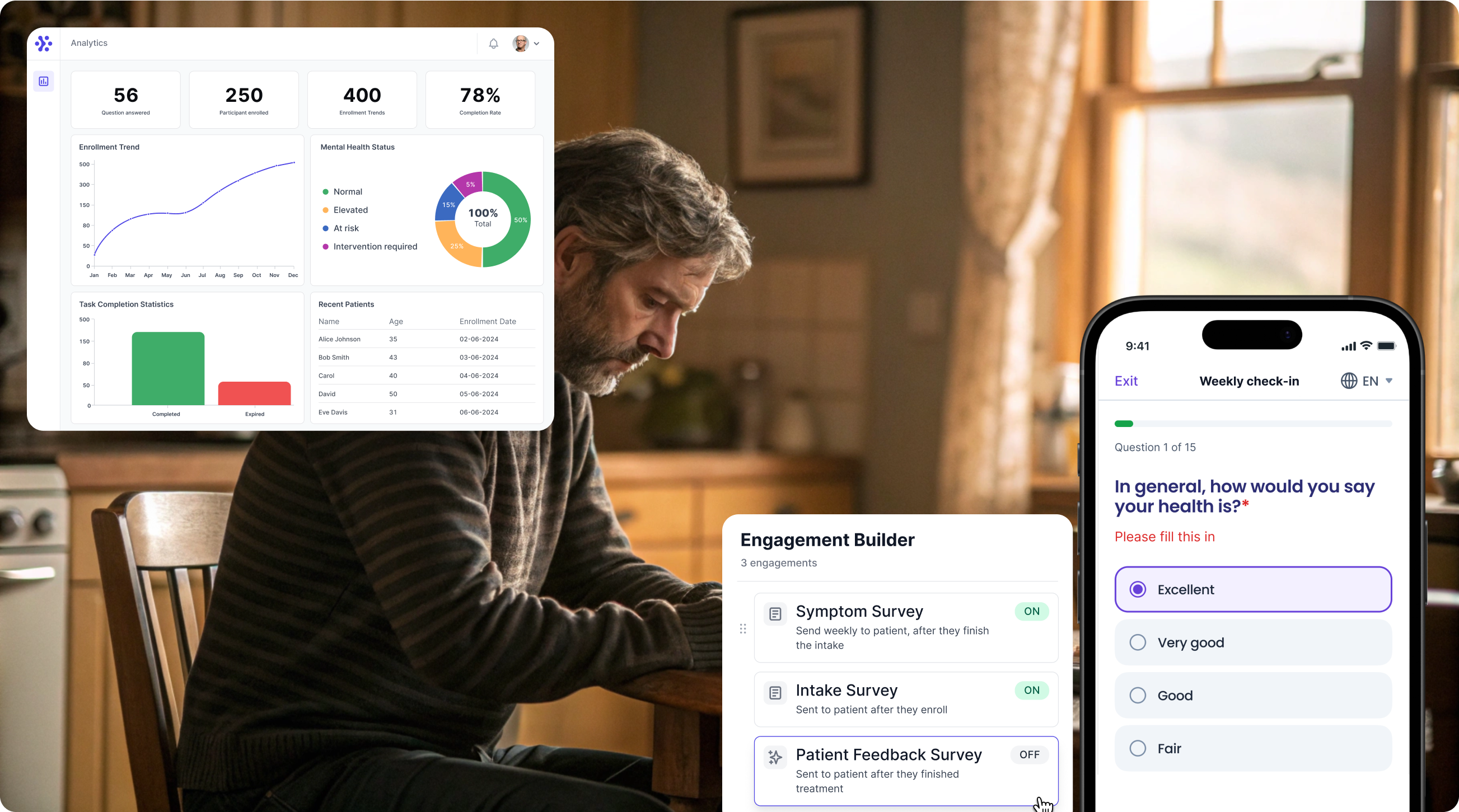Barthel Index: Measuring Independence in Daily Activities
Assesses daily functioning and independence in activities like bathing and toileting, primarily used in rehabilitation and geriatric care.
Learn more
Barthel Index
The Barthel Index assesses a patient's daily functioning and independence in activities such as bathing and toileting, primarily used in rehabilitation and geriatric care settings.
Instrument Description

The Barthel Index (BI) is a widely used assessment tool that measures an individual's daily functioning, specifically activities of daily living (ADL) and mobility. It's an important measure of a person's independence or dependence in performing everyday tasks. The Barthel Index comprises ten items, assessing aspects such as bowel and bladder continence, grooming, toilet use, feeding, transfers, mobility, dressing, stairs, and bathing. Each item is scored based on the person's ability to perform the task, with response options ranging from being completely dependent to being fully independent. The Barthel Index is administered through observation or self-report and is commonly used in rehabilitation settings to monitor patient progress and plan care. Its applications extend to research and clinical practice, providing a standardised measure of functional ability. By using the Barthel Index, healthcare professionals can identify areas where patients require support and develop targeted interventions to improve their functional outcomes, ultimately enhancing patient care and rehabilitation.

The Barthel Index can be scored using one main approach with variations in scoring scales. It measures an individual's daily functioning, specifically activities of daily living (ADL) and mobility. The index scores range from 0 to 20, with some versions using 0-100 by multiplying by 5. Ten items are assessed: bowel and bladder continence, grooming, toilet use, feeding, transfers, mobility, dressing, stairs, and bathing. Each item is scored based on whether the individual can perform the task independently or needs assistance, with scores indicating the level of independence. For instance, a score of 100 (or 20) indicates the person is fully independent in these activities.

Advantages
Develops personalised strategies based on assessment data.
Measures healthcare intervention results systematically.
Maintains uniform healthcare delivery standards.
minutes
questions
Collect EQ-5D data with WeGuide, the all in one patient engagement platform
Organise a demo

Engage with patients like never before
Engage participants at every step of their journey with tools designed to inform, support, and motivate. From wearable data collection to personalized education, create meaningful connections that drive better outcomes.
Learn More


It’s your turn
Every WeGuide project, saves researchers and clinicians - 9 months and $450,000 - creating impactful digital health solutions.



.svg)




